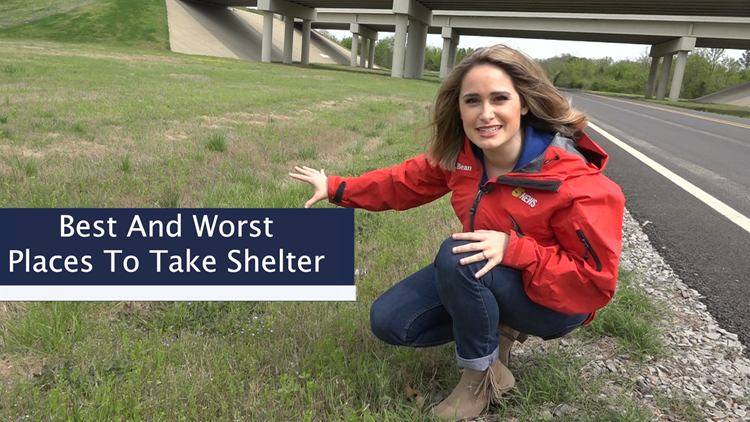Since we’re nearing the peak of severe weather season, it’s important to make a plan for your family. It’s better to have a plan before the storms, rather than when a warning is issued. You should have a plan for when you’re at work, at home, or around town. There are some good areas to take shelter, but then there are some places you want to avoid.
BAD AREAS FOR SHELTER
It’s a common myth that it’s okay to be in mobile homes, vehicles, and under an overpass during tornadoes. That’s false. Those are actually the worst places to be in. Older mobile homes can easily be blown apart. While cars are made for impact, debris can fly straight into them. And, winds actually accelerate as they move under an overpass and can sweep you out.
You want to avoid these situations by staying weather aware when severe weather happens. Once a tornado warning is issued, you typically have around 15 minutes before the storm reaches you. You need to get in the best safe place as soon as possible.
GOOD AREAS FOR SHELTER
The safest places are sturdy structures. This includes tornado safe shelters or a FEMA safe room. You want to go into an interior room that has no windows. Try to put as many walls as you can between you and the outside.
WHAT TO BRING INTO THE SHELTER
This is a list of common items that people bring with them when they take shelter from severe weather. It's best to pack these items in a large container ahead of time.
- Water
- Non-perishable food
- Flashlight
- Batteries in a bag (to stay dry)
- Battery-powered radio or a NOAA Weather Radio
- Gloves
- Whistle
- First aid kit
- Medications
- Multi-purpose tool
- Personal hygiene items
- Copies of personal documents
- Cell phones with chargers
- Emergency contact information
- Emergency blanket
- Coloring books, or other activities, for kids
- Extra clothing and sturdy shoes
- Pet supplies
You also want to have multiple ways to receive the warnings. To be safe, always have three options. This can be watching 5NEWS on your TV, a NOAA weather radio, emergency alerts on your phone and the 5NEWS weather app. During active severe weather, you’ll need to stay weather aware all day or night.
Covering Weather Where You Live, Meteorologist Sabrina Bates, 5NEWS.




